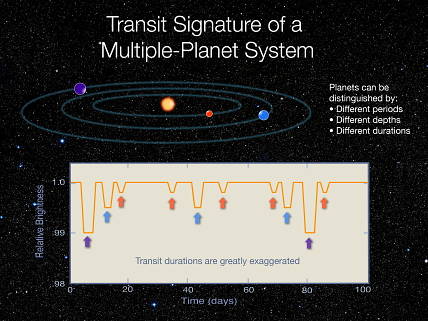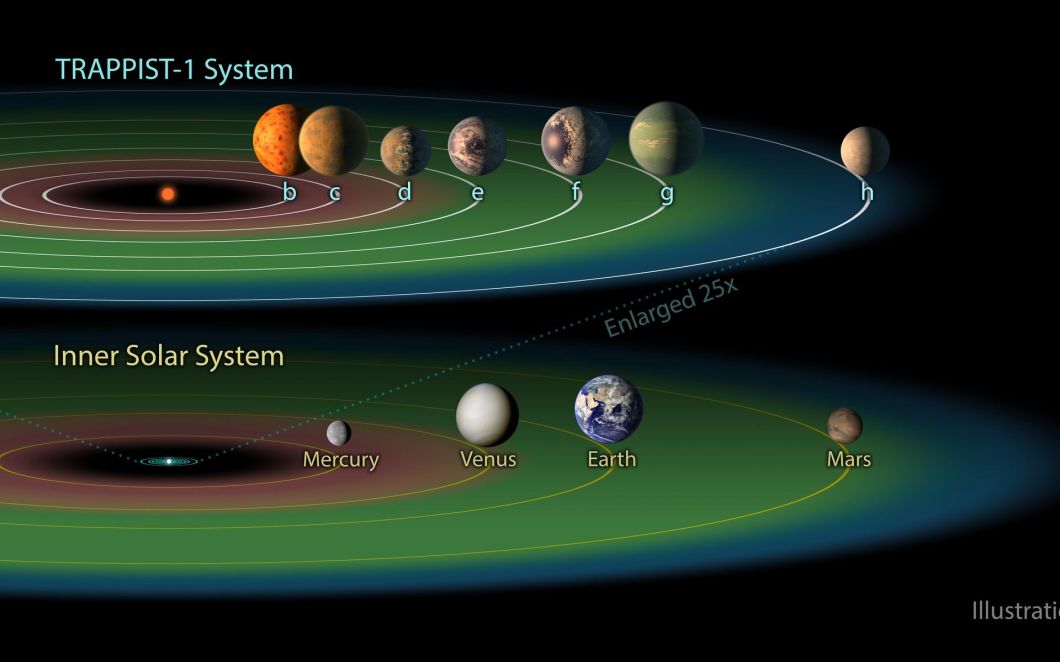Introduction
I still remember being on the bus on the way back from school when a huge astronomy headline was on the news; a star system was discovered with seven planets. It was big news for that day, just like the landing of Mars rover InSight was.
Most of the public is not into astronomy, and most things tend to fly below the public radar, but a few things occasionally hit the news hard, and two years ago that happened with the discovery of the interestingly-named TRAPPIST-1 system in 2016 (named after the telescope which discovered it, the TRAnsiting Planets and PlanetesImals Small Telescope). Why am I talking about something from two years ago? Well, it appeared back in the news a few days ago, and I want to figure out why.
But first, let’s look at what made TRAPPIST-1 so popular in the news to begin with. What makes this system so important in the field of astronomy and a gold mine of science is its orbital plane, its distance, the stability of the star, and the number of planets.
Transit Method
The transit method looks for dips of light from a star from when a planet passes in front of it. This is the easiest manner to detect an exoplanet, and in fact “Of the 3,526 extra-solar planets that have been confirmed to date, the transit method has accounted for 2,771 discoveries”[2]. You’d think that if the transit method is so good why would anyone use other methods, right? Well, the problem is that planets have to be orbiting on a specific orbital plane to be seen via the transit method. There are other methods to detect exoplanets, like gravitational microlensing, but the transit method is the most efficient method that gives us the most data, so we really got lucky that these seven planets orbit on a plane that allows them to be seen from the Earth.

Distance
Distance is another perk to the TRAPPIST-1 system; at 39 light years we can see it well through telescopes and get better data. I’m sure you’re aware that as you get further away from things, they get harder to see, right? Well, same thing with telescopes. They can’t get as good data from systems 200 light years away as the TRAPPIST-1 system less than 39 light years away, because they can’t get as much light. That means that, because of its proximity, we can get a lot of data from the system.
Planets
The TRAPPIST-1 system has seven planets, all rocky, and all very interesting. The planets all “have sizes and masses comparable to the Earth and Venus”[1]. And four reside in the habitable zone (one is the most ideal, TRAPPIST-1e, but TRAPPIST-1d and TRAPPIST-1f , and TRAPPIST-1g reside on the inner and outer edges). Out of the three, TRAPPIST-1e seems most likely for life. Most of these worlds are expected to have abundant amounts of water.

Stability of TRAPPIST-1
TRAPPIST-1A is a very stable star, and doesn’t release flares as often as people would expect. This means that the planets are less likely to be hit by solar flares, which dramatically increase chances of habitability. This is rare in ultracool stars like TRAPPIST-1A.
Why is TRAPPIST-1 in News Again?
Well, now we know why TRAPPIST-1 was so popular in the past, but why is it back? Well, perhaps this Space.com article can tell us why. The interest has to do specifically with the planet I mentioned earlier, TRAPPIST-1e. Scientists have found more information about its habitability, good information. Apparently, TRAPPIST-1e “may host liquid water on its surface and, as a result, be able to support Earth-like life”[3]. It could have an oxygen-rich atmosphere from water that was literally split apart by solar radiation. While the hydrogen can escape the planet’s gravity, oxygen is much heavier and remains behind. This supports TRAPPIST-1e being a water world with an oxygen atmosphere.
What Does This Mean?
All this information has been regurgitated multiple times by the media already, but what this MEANS probably has not. While not confirmed, a water world would be a significant discovery. I’ve always loved the thought of water worlds. What would living on a water world be like? Sailing and fishing would probably be popular. What life would exist underneath the surface? We know ocean life gets big due to not having to deal with gravity constraints, so creatures even bigger than whales could exist in the TRAPPIST-1e oceans. TRAPPIST-1e could spark some good works of fiction. If 100% confirmed, you can bet the media will be talking about it constantly. It would be the first water-world with an oxygen atmosphere ever confirmed, and all telescopes would be on it, because it would be the most likely candidate for extraterrestrial life we know of.
But how would we even get there? I talked a little about interstellar travel, and the view was pretty bleak (I didn’t want it to be!). The time to travel 39 light years would take a long time, and it can’t happen in our lifetimes (unless someone launches a spacecraft that goes almost the speed of light soon, which is unlikely), but people two generations down might see it happen. But we do have something to look forward to; atmospheric analysis. Right now, everything is preliminary, but scientists will be working to more solidly prove that TRAPPIST-1e has an oxygen atmosphere. Then we need to prove it is indeed a water world. And THEN that’s when we can consider visiting it with solar nanoprobes, if that’s even possible.
So, we will be getting a lot more data in the future about TRAPPIST-1 but won’t be going there anytime soon.
Next up, I’ll talk about the James Webb Telescope and its delays and price hikes, because it will be one of the prime observers of this system to get even more of that juicy science data! I hope it’s a water world!
Note: If you want to learn more about TRAPPIST-1, visit this website, it contains everything you want to know and more!
Sources
- http://www.trappist.one/#about
- Matt Williams. https://www.universetoday.com/137480/what-is-the-transit-method/. UniverseToday.
- Samantha Mathewson. https://www.space.com/42512-trappist-1-planet-could-host-life.html. Space.com.
- Title Image Credit – https://www.nasa.gov/feature/jpl/new-clues-to-trappist-1-planet-compositions-atmospheres